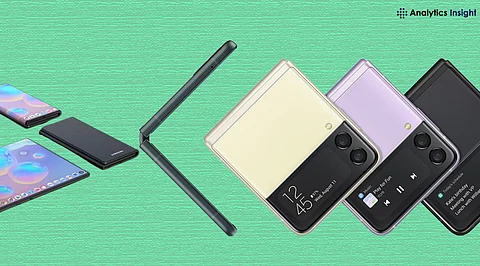

Foldable phones provide enhanced multitasking, immersive media, superior portability, and innovative Flex Mode functionality.
Aggressive Chinese rivals challenge Samsung’s lead with feature-rich, competitively priced foldable devices.
Samsung must resolve charging speeds, camera quality, dust resistance, and bulk to stay competitive.
Samsung has historically acted as the frontrunner in the foldable phone revolution, continuously refining and releasing new iterations of its Galaxy Z Fold and Z Flip series. With fresh auspices about every few years, the company attempts to enhance the foldable experience to offer its users the best of both worlds: a compact phone that opens up to a larger tablet-like display.
Coming under recent speculation has been the rumored launch of the Galaxy Z Fold 7 and Z Flip 7 in July 2025, with design changes having been named as a slimmer profile for the Fold and a larger cover display for the Flip, powered by new processors, alongside extensive camera improvements.
Samsung paved the way for foldables, but it hasn't been an easy path. First-generation models were criticized for crease visibility, durability, and price. These issues have been alleviated quite significantly by Samsung throughout the years; still, the competitors are now starting to have a share in the foldable market.
Despite still being a niche market, foldable smartphones are gradually gaining popularity among a particular user base because of their special combination of functionality and innovation. For these customers, the allure of a foldable gadget frequently comes down to a few strong benefits that conventional ‘slab’ phones simply cannot match.
Samsung’s Z Fold series offers enhanced multitasking and productivity due to its larger internal screen, allowing users to run multiple apps side-by-side with ease.
The expansive display offers a more immersive experience for watching videos, gaming, or browsing content compared to standard smartphones, bringing movies and games to life.
Flip-style foldables, like Samsung’s Z Flip, offer superior portability, folding a full-sized smartphone into a compact form factor, resembling classic flip phones while delivering modern smartphone capabilities.
Samsung’s Flex Mode allows the phone to be partially folded, transforming half the screen into a display and the other half into controls or a keyboard.
Samsung’s Galaxy foldable phones still suffer in some areas where they are seen to be lagging or could greatly improve, despite their pioneering role and ongoing improvement, especially as competition heats up:
Samsung’s wired charging speeds, typically 25W, are slower than Chinese brands’ 67W, 80W, or 120W+, causing inconvenience for users accustomed to rapid top-ups.
The Z Fold’s under-display camera, despite its technological advancements, often produces subpar images due to visible pixel density and lack of sharpness and detail.
Samsung’s foldables, despite their impressive water resistance (IPX8), lack official dust resistance due to intricate hinge mechanisms, posing potential concerns for long-term durability.
Z Fold devices, while becoming thinner with each generation, still feel thick and heavy when folded compared to traditional slab phones.
Also Read: Next Foldable Frontier: Will Samsung’s Tri-Fold Smartphone Succeed?
While Samsung is still a global leader in smartphone shipments, even its traditional phone sales have seen some shifts. Factors contributing to this include:
More so Chinese ones are putting in very high-tech phones at really violent price points; these have stolen good market shares in developing markets.
Though very profitable, focused, super high-end flagships from Samsung do not appeal very well, especially in price-conscious markets where budget and mid-range are more marketed.
Samsung is innovative as long as we consider the foldables, but the perceived incremental pace of innovation in its traditional flagship line would have less compelling upgrade cycles.
Samsung, in particular, must never rest on its laurels as a first mover in foldables.
Samsung emphasizes the high-end smartphone market, which gets limiting in price-sensitive markets where budget and mid-tier phones remain more popular choices. The Chinese competitors now present a challenge to Samsung in the foldable market with feature-rich devices at competitive prices. However, these devices don't always match Samsung's premium pricing.
Some analysts profess that Samsung's foldable advancements remained incremental when compared to some of the more drastic steps by its competitors. Technically, Samsung may still hold the lead in hinge and display technology, but others might beat Samsung for the defining feature of a seamless fold or faster charging.
Samsung's potential dethroning from market leadership is an intricate matter involving more than just a lack of innovation. The more pressing factors have mostly to do with the stiff, rapidly evolving competitive landscape, particularly Chinese competition that is aggressively high-tech and low-priced.
Concurrently, Samsung has found it challenging to address certain pain points for its users with the same speed and efficiency as some of its competitors.
While Samsung has been an early mover in foldable technologies, its pace of innovation in traditional flagship categories may be perceived as slow. Competitors are making significant leaps in areas like fast charging and seamless designs, which could impact Samsung's upgrade cycle.
For Samsung to maintain its leadership in the emerging foldable market, it must continue innovating in core technologies like hinges and displays. Additionally, it needs to deliver a seamless user experience in other key areas, including camera quality, dust resistance, device design, and charging speed.
Also Read: Apple’s Folding iPhone May Outshine Galaxy Z Fold 7
